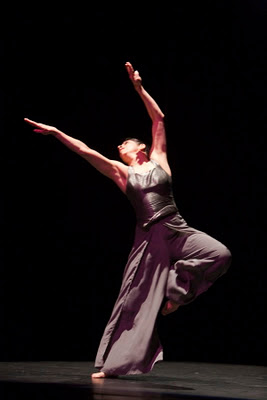Aditi Mangaldas in 'Timeless'
Aditi Mangaldas is a renowned Kathak dancer. A brief
introduction about her is already on this blog. She performed on the 4th
of November at the Kamani auditorium during the Delhi International Arts Festival.
The theme of the performance was ‘Timeless’.
Aditi Mangaldas is very deeply rooted in the classical form
of Kathak and making these roots her base, she gives her dance a contemporary
vocabulary. Her guru Kumudani Lakhia gave that contemporary angle to her
training. Aditi says, “I love doing Kathak in its pure form, but I love giving
it a contemporary direction and infuse contemporary sensibilities into it. It
is not like mixing two things, but taking the base or roots of Kathak and then
giving it a new vocabulary.” Aditi’s creativity shows in her choreography and
this is what she says about it - “I am a dancer first and a choreographer
later. I have to translate poetry, imagery, or emotions into dance. I read a
lot about the concept and talk to people about it and this helps in forming
images in my mind. Then I take these images to the floor and see how they
transform into dance. I work with myself primarily as a dancer, and then with
my company.”
‘Timeless,’ the theme of the performance, is an abstract
concept. Time is not anything tangible. It is a relative term. Aditi says it is
not a single perspective, it is many questions. Is time reversible? Is it
still? Is it parallel? Does it flow? Can we hold time past and time future in
time present? Is it flexible? Is time cyclic? Does it trip? Does it end? It is
an individual perception. Like Aditi said that her son grew up so fast that she
did not realize how time went by. She enunciated these questions with actions
and dance. Another concept about time that she discussed during her performance
was the relativity of time. When you look from a moving train, you feel you are
sitting still and the trees outside are moving backwards. So, are we still and
time and age pass us by? Or is time like leaves flitting on water, sometimes here, sometimes there? If time flows like a river, then does it have a beginning
and an end?
The dancers were dressed in blue and grey contemporary
costumes. Behind them was a screen with circular lights. The music by Shubha
Mudgal and Aneesh Pradhan had the sounds of bells and gongs. It was a spectacle
to watch that transported one to another realm altogether. The movement of
planets keeps time, and so their movement is timeless. The dancers had immense
energy, giving thap with their feet and revolving with such speed that it took
one’s breath away. They drew lines with their hands that Aditi later explained
were related to time. They were tapping their feet on the floor and beating
time on their body with their hands. Time might not be tangible, but you could certainly
see, feel and hear time during the performance.
The live singing and live tabla and pakhawaj lent their own
beauty. Ashish Gangani is an excellent
pakhawaj player. Songs like ‘Laagi Hai Chala-Chali’ or shlokas recited about time
added to the impact. Aditi performed solo to a song by Shubha Mudgal. The lover’s
embrace is like a swing, ‘Rahyo Hai Hindor’, and then you feel that time should
stand still. These moments should not pass. Aditi performed ballet-like movements
ending with an embrace. All the time the dancers did not deviate from the
classic Kathak moves.
Timelessness is a feeling that you get while watching the performance
and the experience that you get is priceless.
Photo Credits:
1. Aditi Mangaldas by Vipul Sangoi, Raindesign, London.
1. Aditi Mangaldas by Vipul Sangoi, Raindesign, London.
2. and 3. Dance performance by Harkiran Singh Bhasin, NCPA, Mumbai





Comments
Post a Comment